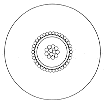Speaker manufacturers use measurements as a necessary tool in their development, but they're not necessarily to any good use to the buyer as it pertains to being a worthwhile reflection of their sound in certain respects. In some cases though they can be of use, like the measurements supplied to the pro compression drivers of my speakers where we used them as an outset (before taking measurements ourselves) for making filter notches and a peak suppression in an active configuration. The supplied measurements by the manufacturer turned out to be rather spot-on, we just used our own measurements to hone in more precisely on the specific notch and suppression frequencies in the tweaking process, while also to be the wiser on the actual, overall frequency response.
What I would like to see supplied with speakers, and which I believe to be relatively indicative of a speaker's performance in selective areas, is distortion numbers at frequency intervals over their entire spectrum and at low to high SPL's. Distortion numbers in the bass for example can amount to double digits at higher SPL's, but the more headroom the lower the distortion and the cleaner the bass. The same essentially goes for the remainder of the frequency spectrum. At least in that regard - i.e.: distortion numbers - I see speaker manufacturers hiding the ugly facts from exposition here, rather than honestly feeling them "irrelevant" to the consumers.


